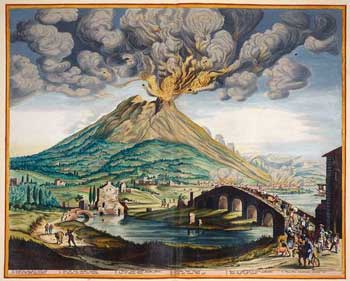Dirk Jansz. van Santen

DIRK JANSZ. VAN SANTEN
ILLUMINATED AND GILDED THE
MOST
PRESTIGIOUS PRINTED WORKS OF HIS TIME
IN AN EXCEPTIONALLY PAINTERLY AND
BRILLIANT MATTER
IN SO DOING HE MADE THE GOLDEN AGE
QUITE LITERALLY GOLDEN
A SURVEY
BY
TRUUSJE GOEDINGS
(Amsterdam / Paulus Swaen 1992 )
"Master colourist" Dirk Jansz van Santen (1637/38-1708)
In the seventeenth century, the Netherlands held a prominent position in Europe in the production of books, maps and prints.
Not only were the number, diversity and quality of printed works renown, but also the "versiering" - the application of decorative graphic elements in the coloring of maps, prints, title pages,
opening and closing vignettes, etc. Little is known about the many print and map colorists, the 'const- en caertafzetters', who lived in the Netherlands at the time. Three colorists are seen as the most important artists of that time: Frans Koerten, David Reerigh, and Dirk Jansz. van Santen.
Since the work of a colorist was usually not signed, many have remained anonymous.
However, the most important exception on this was Dirk Jansz. van Santen to this rule is Dirk Jansz van Santen.
Atlases and books colored by Van Santen figured among the showpieces of the most prominent collections, such as that of the Amsterdam burgomaster Nicolaas Witsen (1641-1717) or of Laurens van
der Hem (1621-1678), a wealthy Amsterdam lawyer. Bibles and atlases, bound in deluxe bindings by Albert Magnus (1642-1689) and decorated by Van Santen were considered gifts worthy of princes.
Travelers and poets wrote about his work. There is a reference to him in the travel account of Zacharias Konrad von Uffenbach, Merkwürdige Reisen... (Ulm, 1750-54). Von Uffenbach was the
burgomaster of Frankfurt and an art collector who left a record of his visit to Amsterdam in 1711, making it clear that collectors competed with each other to obtain the best of what Van Santen had made.
The colors, the gold, the patience and industriousness of Van Santen were obviously of great renown at the end of the 17th century. Recently, H. de la Fontaine Verwey started to retrieve Van
Santen's work.
In locating a number of atlases, Bibles and illustrated books colored by Van Santen, he has laid the basis for
further research. What follows is a summary of the current state of research on Van Santen's life and work, supplemented with new information and a description of his work method.